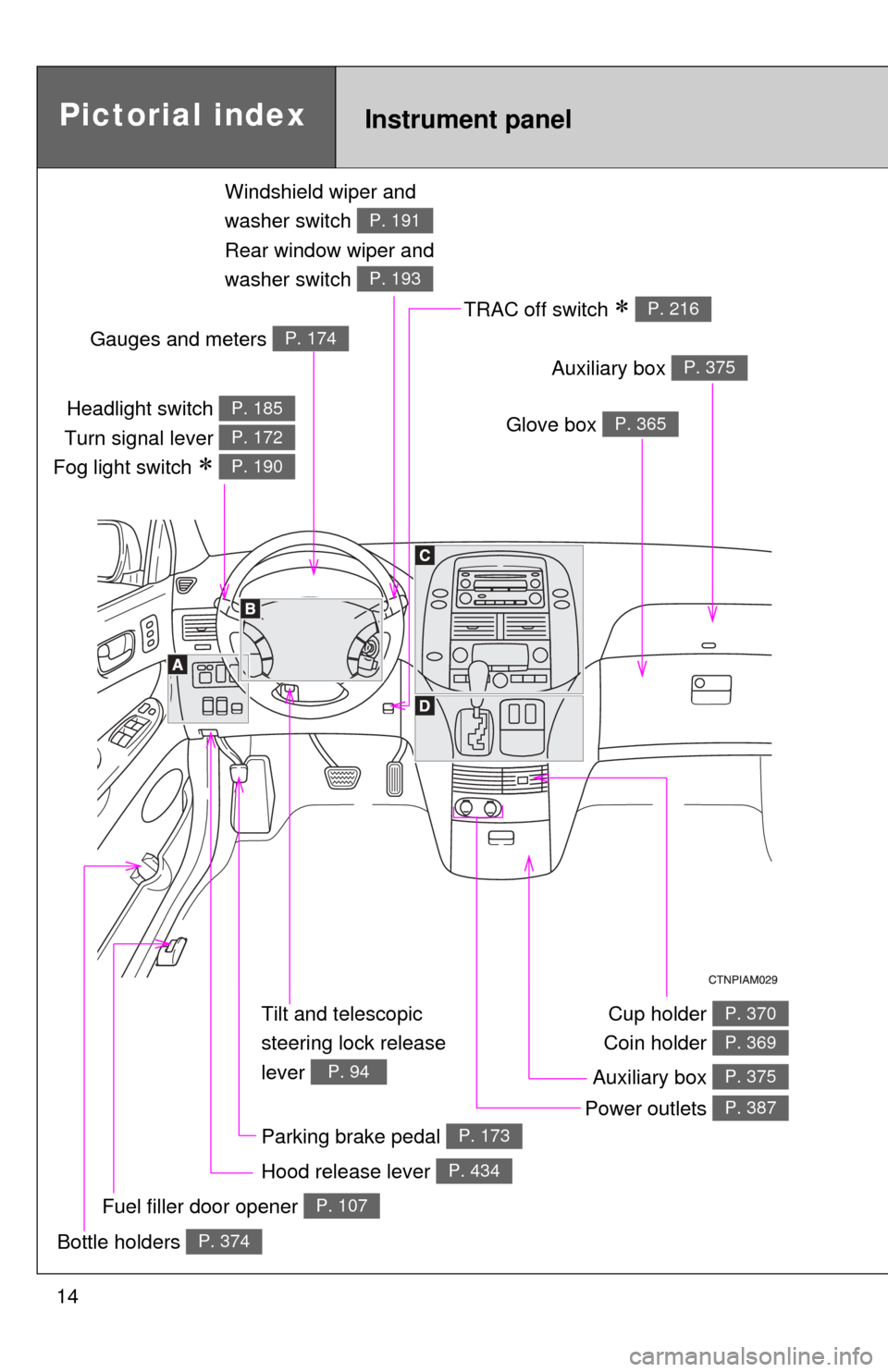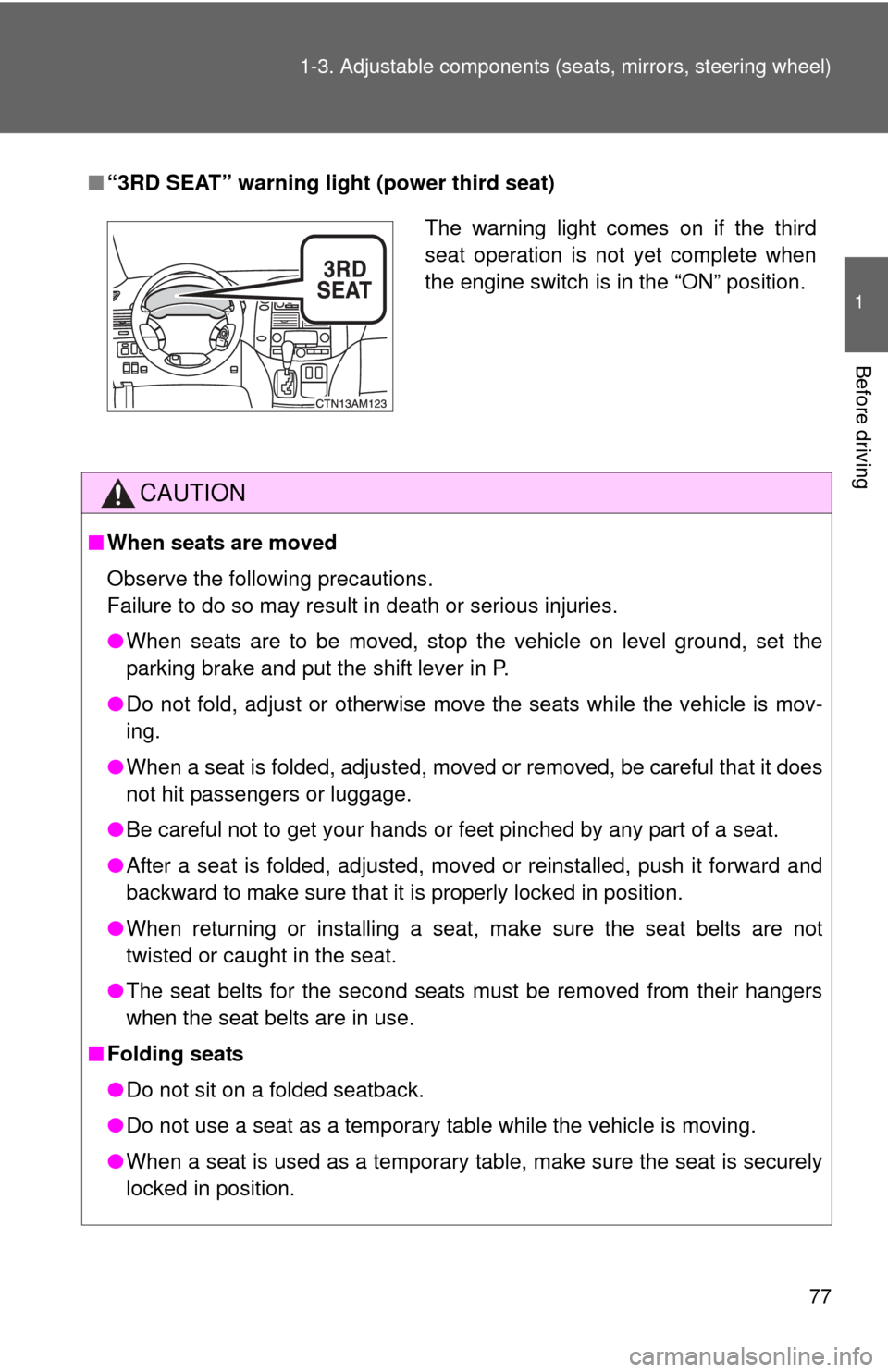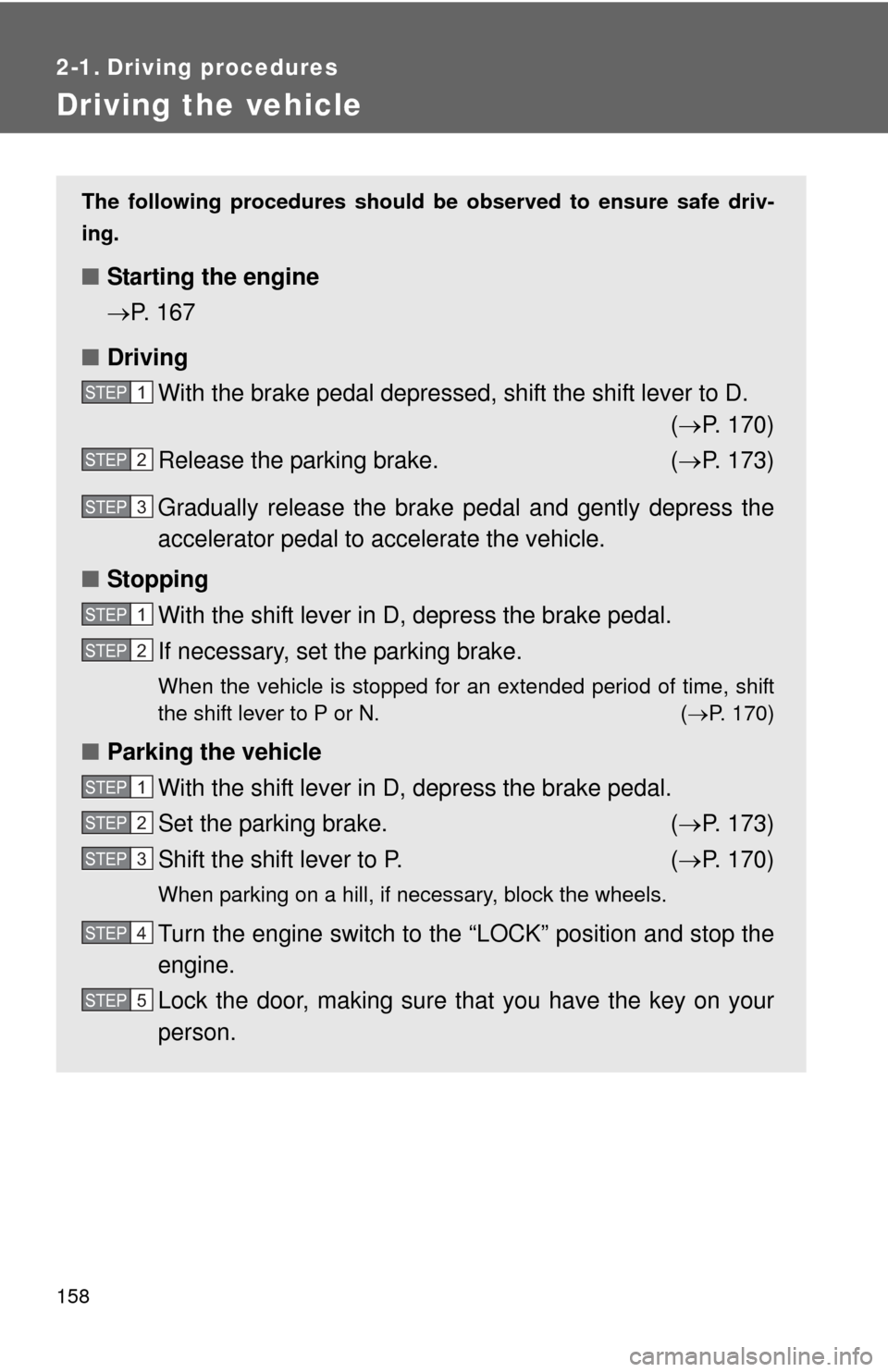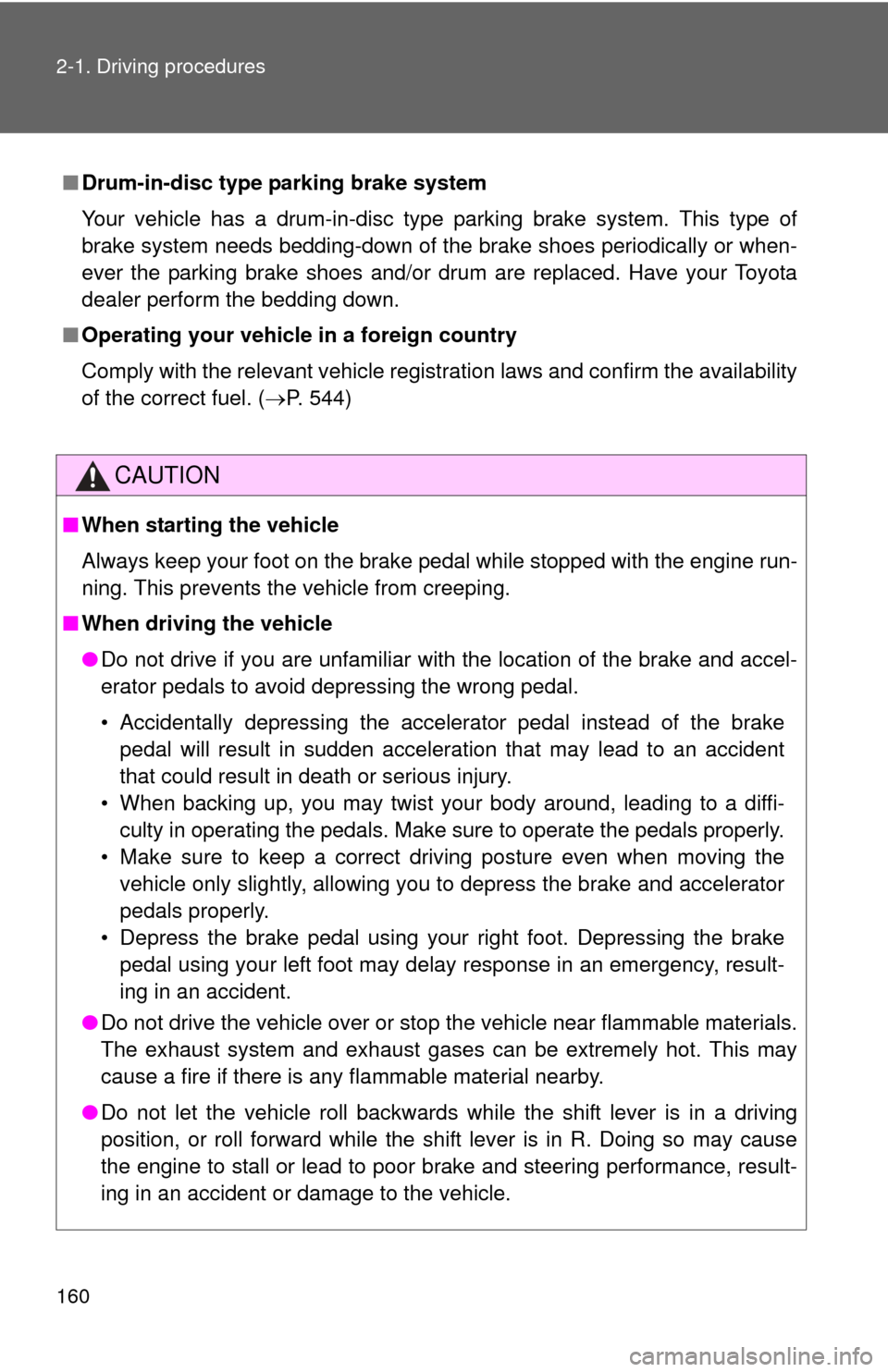2010 TOYOTA SIENNA parking brake
[x] Cancel search: parking brakePage 2 of 592

TABLE OF CONTENTSIndex
2
1-1. Key informationKeys ..................................... 26
1-2. Opening, closing
and
locking the
doors
Wireless remote control ....... 27
Front doors ........................... 33
Sliding doors ........................ 37
Back door ............................. 47
1-3.
Adjustable components
(seats, mirrors,
steering wheel)
Front seats
........................... 56
Second seats ....................... 59
Third seats ........................... 61
Seating configurations.......... 63
Driving position memory....... 80
Head restraints ..................... 82
Seat belts ............................. 85
Steering wheel ..................... 94
Anti-glare inside rear view mirror .................................. 95
Outside rear view mirrors ..... 97
1-4. Opening a
nd closing the
windo
ws
Power windows .................. 100
Quarter windows ................ 102
Moon roof ........................... 104
1-5. Refueling Opening the fuel tank cap ................................... 107 1-6. Theft deterrent system
Engine immobilizer system .............................. 111
Alarm .................................. 113
Theft prevention labels (for U.S.A.) ....................... 115
1-7. Safety information Correct driving posture ....... 116
SRS airbags ....................... 118
Front passenger occupant classification system ......... 130
Child restraint systems ....... 136
Installing child restraints ..... 140
2-1. Driving procedures Driving the vehicle .............. 158
Engine (ignition) switch....... 167
Automatic transmission ...... 170
Turn signal lever ................. 172
Parking brake ..................... 173
2-2. Instrument c
luster and
information display
Gauges and meters
............ 174
Indicators and warning lights ................................. 177
Trip information display ...... 181
2-3. Operating the li
ghts and
wipers
Headlight switch
................. 185
Fog light switch ................... 190
1Before driving
2When driving
Page 14 of 592

14
Tilt and telescopic
steering lock release
lever
P. 94
Pictorial index
Headlight switch
Turn signal lever
Fog light switch
P. 185
P. 172
P. 190
Instrument panel
Glove box P. 365
Windshield wiper and
washer switch
Rear window wiper and
washer switch
P. 191
P. 193
Auxiliary box P. 375
Power outlets P. 387
Fuel filler door opener P. 107
Gauges and meters P. 174
TRAC off switch P. 216
Cup holder
Coin holder P. 370
P. 369
Auxiliary box P. 375
Parking brake pedal P. 173
Bottle holders P. 374
Hood release lever P. 434
Page 77 of 592

77
1-3. Adjustable components (s
eats, mirrors, steering wheel)
1
Before driving
■“3RD SEAT” warning light (power third seat)
CAUTION
■When seats are moved
Observe the following precautions.
Failure to do so may result in death or serious injuries.
●When seats are to be moved, stop the vehicle on level ground, set the
parking brake and put the shift lever in P.
● Do not fold, adjust or otherwise move the seats while the vehicle is mov-
ing.
● When a seat is folded, adjusted, moved or removed, be careful that it does
not hit passengers or luggage.
● Be careful not to get your hands or feet pinched by any part of a seat.
● After a seat is folded, adjusted, moved or reinstalled, push it forward and
backward to make sure that it is properly locked in position.
● When returning or installing a seat, make sure the seat belts are not
twisted or caught in the seat.
● The seat belts for the second seats must be removed from their hangers
when the seat belts are in use.
■ Folding seats
●Do not sit on a folded seatback.
● Do not use a seat as a temporary table while the vehicle is moving.
● When a seat is used as a temporary table, make sure the seat is securely
locked in position.
The warning light comes on if the third
seat operation is not yet complete when
the engine switch is in the “ON” position.
Page 157 of 592

When driving2
157
2-1. Driving proceduresDriving the vehicle............ 158
Engine (ignition) switch .... 167
Automatic transmission .... 170
Turn signal lever .............. 172
Parking brake ................... 173
2-2. Instrument cluster and information display
Gauges and meters ......... 174
Indicators and warning lights .............................. 177
Trip information display .... 181 2-3. Operating the lights and
wipers
Headlight switch ............... 185
Fog light switch ................ 190
Windshield wipers and washer ........................... 191
Rear window wiper and washer ........................... 193
2-4. Using other driving systems Cruise control ................... 194
Dynamic laser cruise control ............................ 197
Intuitive parking assist...... 209
Driving assist systems ..... 215
2-5. Driving information Cargo and luggage .......... 219
Vehicle load limits ............ 225
Winter driving tips ............ 226
Trailer towing ................... 229
Dinghy towing .................. 237
Page 158 of 592

158
2-1. Driving procedures
Driving the vehicle
The following procedures should be observed to ensure safe driv-
ing.
■ Starting the engine
P. 167
■ Driving
With the brake pedal depressed, shift the shift lever to D. ( P. 170)
Release the parking brake. ( P. 173)
Gradually release the brake pedal and gently depress the
accelerator pedal to accelerate the vehicle.
■ Stopping
With the shift lever in D, depress the brake pedal.
If necessary, set the parking brake.
When the vehicle is stopped for an extended period of time, shift
the shift lever to P or N. ( P. 170)
■Parking the vehicle
With the shift lever in D, depress the brake pedal.
Set the parking brake. ( P. 173)
Shift the shift lever to P. ( P. 170)
When parking on a hill, if necessary, block the wheels.
Turn the engine switch to the “LOCK” position and stop the
engine.
Lock the door, making sure that you have the key on your
person.
STEP1
STEP2
STEP3
STEP1
STEP2
STEP1
STEP2
STEP3
STEP4
STEP5
Page 159 of 592

159
2-1. Driving procedures
2
When driving
Starting on a steep uphill
Firmly set the parking brake and shift the shift lever to D.
Gently depress the accelerator pedal.
Release the parking brake.
■Driving in the rain
●Drive carefully when it is raining, because visibility will be reduced, the
windows may become fogged-up, and the road will be slippery.
● Drive carefully when it starts to rain, because the road surface will be
especially slippery.
● Refrain from high speeds when driving on an expressway in the rain,
because there may be a layer of water between the tires and the road
surface, preventing the steering and brakes from operating properly.
■ Breaking in your new Toyota
To extend the life of the vehicle, the following precautions are recommended
to observe:
●For the first 200 miles (300 km):
Avoid sudden stops.
● For the first 500 miles (800 km):
Do not tow a trailer.
● For the first 1000 miles (1600 km):
• Do not drive at extremely high speeds.
• Avoid sudden acceleration.
• Do not drive continuously in the low gears.
• Do not drive at a constant speed for extended periods.
STEP1
STEP2
STEP3
Page 160 of 592

160 2-1. Driving procedures
■Drum-in-disc type parking brake system
Your vehicle has a drum-in-disc type parking brake system. This type of
brake system needs bedding-down of the brake shoes periodically or when-
ever the parking brake shoes and/or drum are replaced. Have your Toyota
dealer perform the bedding down.
■ Operating your vehicle in a foreign country
Comply with the relevant vehicle registration laws and confirm the availability
of the correct fuel. ( P. 544)
CAUTION
■When starting the vehicle
Always keep your foot on the brake pedal while stopped with the engine run-
ning. This prevents the vehicle from creeping.
■ When driving the vehicle
●Do not drive if you are unfamiliar with the location of the brake and accel-
erator pedals to avoid depressing the wrong pedal.
• Accidentally depressing the accelerator pedal instead of the brake
pedal will result in sudden acceleration that may lead to an accident
that could result in death or serious injury.
• When backing up, you may twist your body around, leading to a diffi- culty in operating the pedals. Make sure to operate the pedals properly.
• Make sure to keep a correct driving posture even when moving the vehicle only slightly, allowing you to depress the brake and accelerator
pedals properly.
• Depress the brake pedal using your right foot. Depressing the brake pedal using your left foot may delay response in an emergency, result-
ing in an accident.
● Do not drive the vehicle over or st op the vehicle near flammable materials.
The exhaust system and exhaust gases can be extremely hot. This may
cause a fire if there is any flammable material nearby.
● Do not let the vehicle roll backwards while the shift lever is in a driving
position, or roll forward while the shift lever is in R. Doing so may cause
the engine to stall or lead to poor brake and steering performance, result-
ing in an accident or damage to the vehicle.
Page 161 of 592

161
2-1. Driving procedures
2
When driving
CAUTION
●
If the smell of exhaust is noticed inside the vehicle, open the windows and
check that the back door is closed. Large amounts of exhaust in the vehi-
cle can cause driver drowsiness and an accident, resulting in death or a
serious health hazard. Have the vehicle inspected by your Toyota dealer
immediately.
● Do not shift the shift lever to P while the vehicle is moving.
Doing so can damage the transmission and may result in a loss of vehicle\
control.
● Do not shift the shift lever to R while the vehicle is moving forward.
Doing so can damage the transmission and may result in a loss of vehicle\
control.
● Do not shift the shift lever to D while the vehicle is moving backward.
Doing so can damage the transmission and may result in a loss of vehicle\
control.
● Moving the shift lever to N while the vehicle is moving will disengage the
engine from the transmission. Engine braking is not available when N is
selected.
● During normal driving, do not turn off the engine. Turning the engine off
while driving will not cause loss of steering or braking control, but the
power assist to these systems will be lost. This will make it more difficult to
steer and brake, so you should pull over and stop the vehicle as soon as it
is safe to do so.
However, in the event of an emergency, such as if it becomes impossible
to stop the vehicle in the normal way: P. 504
● Use engine braking (downshift) to maintain a safe speed when driving
down a steep hill. Using the brakes continuously may cause the brakes to
overheat and lose effectiveness. ( P. 170)
● When stopped on an inclined surface, use the brake pedal and parking
brake to prevent the vehicle from rolling backward or forward and causing
an accident.
● Do not adjust the position of the steering wheel, the seat, or the inside or
outside rear view mirrors while driving. Doing so may result in a loss of
vehicle control that can cause accidents that may result in death or serious
injury.